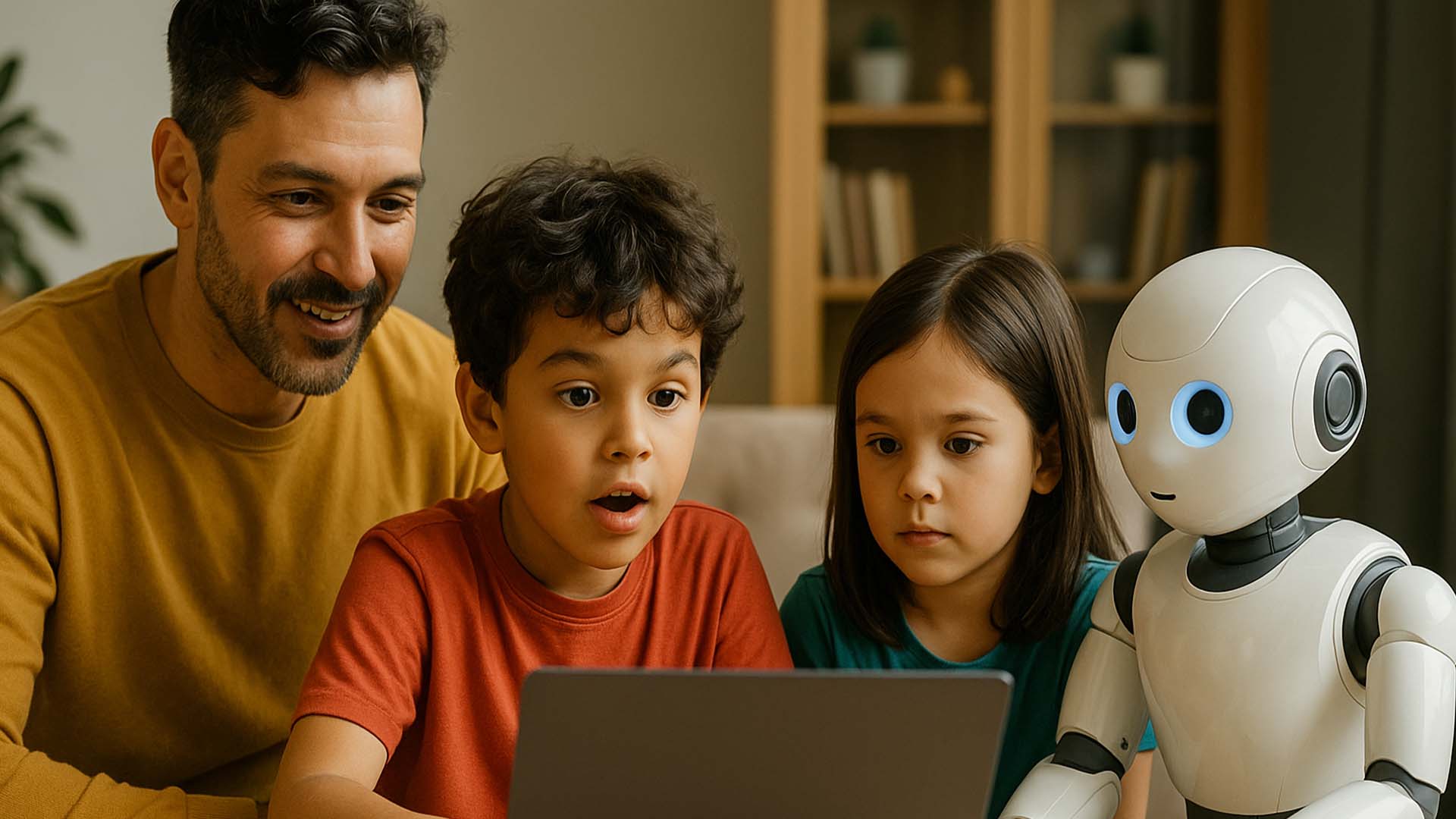Artificial Intelligence (AI) is rapidly changing our world, and children are growing up in an era where AI is becoming increasingly present in their daily lives. From educational apps to smart toys, AI offers exciting opportunities for learning and development. However, it also presents challenges and risks that parents and children need to understand.
This article will explore the positive and negative impacts of AI on children, discuss how AI is being used in education, and provide guidance on how to navigate this new technological landscape safely and effectively.
What is AI?
AI refers to computer systems designed to perform tasks that typically require human intelligence. This includes learning, problem-solving, decision-making, and understanding language. For children, AI often appears in the form of personalized learning tools, interactive games, and even virtual assistants.
The Good Side of AI for Kids
AI can be a powerful tool for enhancing a child’s learning experience. Many educational apps use AI to adapt to a child’s learning pace and style, offering personalized content and feedback. This can make learning more engaging and effective.
For example, platforms like Khanmigo [1] and Smartick [2] utilize AI to provide tailored tutoring and practice problems, helping children grasp complex subjects more easily. AI-powered tools can also foster creativity and problem-solving skills through interactive storytelling and coding games.
The Challenges and Risks of AI for Kids
While AI offers many benefits, it also comes with potential downsides. One major concern is the impact on privacy, as AI systems often collect vast amounts of data about users. There are also risks related to exposure to biased or inappropriate content, as AI algorithms can sometimes perpetuate stereotypes or spread misinformation [3].
Excessive reliance on AI could also hinder the development of critical thinking and social-emotional skills if not balanced with human interaction and traditional learning methods [4]. Furthermore, the rise of AI-generated content, such as deepfakes, poses new threats related to online safety and the spread of harmful material [5].
AI in Education: Personalized Learning
AI is transforming education by offering highly personalized learning experiences. AI tutors can identify a child’s strengths and weaknesses, providing targeted exercises and explanations. This can be particularly beneficial for children who struggle in traditional classroom settings or those who need advanced challenges. AI-powered educational games can make learning fun and interactive, keeping children motivated and engaged. However, it’s crucial to remember that AI should complement, not replace, the role of human teachers and parental guidance.
Navigating the AI World Safely
Parents play a vital role in guiding their children through the AI landscape. Here are some tips:
- Educate Yourself and Your Child: Understand how AI works and discuss its implications with your children. Teach them about data privacy and critical evaluation of online information.
- Set Boundaries: Establish clear rules for screen time and the use of AI-powered devices. Encourage a balance between digital and offline activities.
- Choose Reputable Tools: Opt for AI applications and platforms from trusted developers that prioritize child safety and privacy.
- Monitor Usage: Keep an eye on the content your child interacts with and be aware of any changes in their behavior or interests.
- Foster Critical Thinking: Encourage children to question information, understand different perspectives, and develop their own problem-solving skills, rather than relying solely on AI for answers.
Q&A: AI and Children
Q1: Is AI safe for my child?
A1: AI can be safe when used responsibly and with parental guidance. It’s important to choose reputable AI tools, set boundaries, and educate your child about online safety and privacy.
Q2: How can AI help my child learn?
A2: AI can personalize learning experiences, provide tailored tutoring, and make educational content more engaging through interactive games and adaptive platforms.
Q3: What are the main risks of AI for children?
A3: The main risks include privacy concerns, exposure to biased or inappropriate content, potential negative impacts on critical thinking and social-emotional development, and the misuse of AI for harmful purposes like deepfakes.
Q4: Should I limit my child’s exposure to AI?
A4: It’s advisable to set healthy boundaries for screen time and AI usage. A balanced approach that combines digital learning with offline activities and human interaction is best for a child’s holistic development.
Sources
- Khanmigo: Khan Academy’s AI-powered teaching assistant
- Smartick: AI-powered math program
- How Will Artificial Intelligence (AI) Affect Children?
- The Impact of AI on Children’s Development
- The Dark Side of AI: Risks to Children








0 Comments